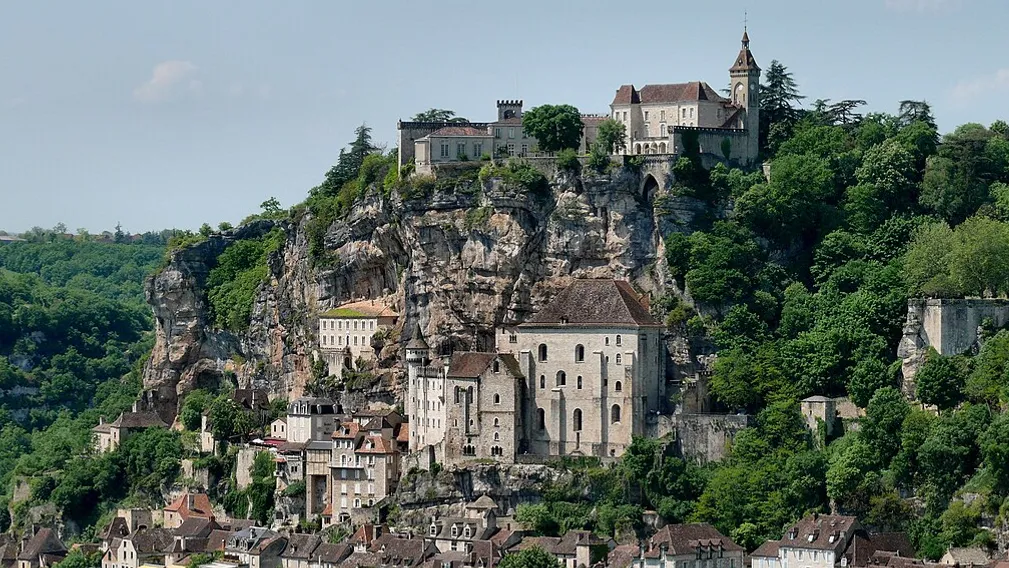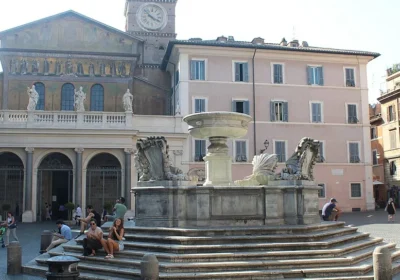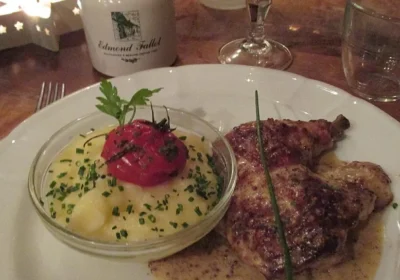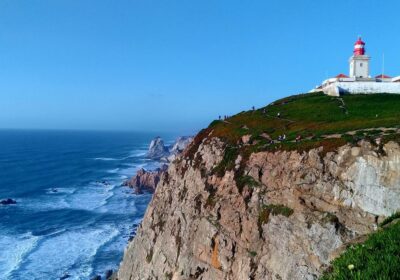Rocamadour is a cliff-top town and France’s oldest religious pilgrimage site, which still impresses with its breathtaking location. Medieval architects managed to use a natural phenomenon – the gorge of the river Alzou (Alzou) 150 meters deep and built on one of its sides of the city, whose houses are molded to the rock like swallows’ nests.
An old rusty sword is stuck into this rock at a certain height – according to legend, it is the sword of Roland, which came down to us from the time of Charlemagne. There are many other legends connected with this place.
According to one of them, Rocamadour owes its appearance to the hermit monk Zacha, husband of St. Veronica and disciple of Christ, who after the death of his wife took refuge in the valley of Alzu … Hence the name of the city roc amator – “lover of rocks”. The tomb of the monk with miraculous relics was found in 1166. Since then, all sorts of miracles began to happen here, and on some religious holidays gathered up to 30 thousand pilgrims.
Since the late 19th century, Rocamadour has become a popular tourist destination. In the city you can see Organic Art, presenting the works of one of the local craftsmen, who paints whimsical driftwood. In the courtyard of the house where Organic Art is located, there are homemade tables, chairs, benches and doors made of huge pieces of wood. Children will enjoy the nearby Foret des Singes (Monkey Forest), where 150 animals live in the wild, the Butterfly Garden, the Eagle Rock, the Railroad Museum and the Museum of Antique Toy Cars, which features collections of legendary brands (Cadillac, Ferrari, Maserati), as well as airplanes, scooters and even a flying saucer. The area is also famous for its signature goat cheese, which goes by the name, Rocamadour. Walking up the pretty streets to the city center, you can visit souvenir shops with a large but peculiar assortment. For example, one of them called Les Arts de Facade sells stylized house numbers, various inscriptions on mailboxes, simple figures, intricate curls and badges. Next door there is a store with all sorts of bells and bells and a souvenir shop with reduced copies of ancient weapons.
Continuing up the main street, you find yourself on the “holy territory”, where there are seven churches. The oldest of them is the Chapel of Notre Dame, which houses the famous Black Madonna (a statue of Our Lady made of walnut wood, blackened from the soot of candles) and the bell that rang to announce the miracle. Nearby are: the chapel of St. Michel, built in Romanesque style and decorated with frescoes of the XII century; the chapels of St. Blaise, St. Jean-Baptiste and the church of St. Sauveur, one of the walls of which is replaced by a rock. Here are also the tomb of St. Amadour and the Cave of Miracles.
At the top of the rock, to the castle of Rocamadour, there is a powerful staircase winding between 14 intermediate platforms with small chapels. They symbolize the 14 stops made by Christ during his march to Golgotha. Religious pilgrims climb the stairs on their knees and pray at each platform. And at the top of the stairs is the Cross of Golgotha, brought by pilgrims from the Holy Land. The castle walls offer a picturesque view of the Alzu Valley and the surrounding countryside.

















